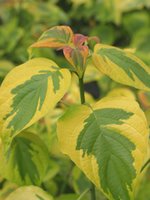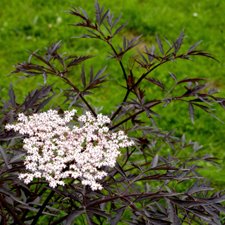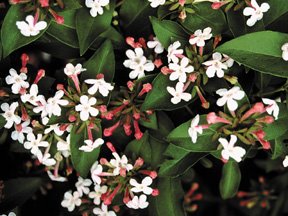
Pagoda Dogwood, Cornus alternafolia, is a native understory plant that can be grown as a shrub or a small tree. Golden Shadows® (C. alternifolia 'Wstackman' pp#11,287) is an exciting new variety discovered by Walt Stackman, a daylily breeder from Illinois. It has brightly variegated leaves that are reminiscent of a variegated Hosta. To add icing on the cake, the new growth is tinged with hues of red and pink. Just like the species, this dogwood has white lacy blooms in mid to late spring. My plant was in full bloom on May 31 here in Michigan.
Previously to the release of Golden Shadows, the only other selection of variegated Pagoda Dogwood was a variety named 'Argentea'. While highly prized by collectors for its silver variegated leaves, 'Argenea' had the reputation as a plant that grew smaller each year instead of larger.
Golden Shadows is a robust plant and can be easily grown if planted in the proper location. Remember this is an understory species, so it adapted to growing in shady locations under larger trees. To get the most out of Golden Shadows plant it in a shady location, or better yet, in a location with filtered sun. With proper site selection you will be rewarded with strong growth and bright foliage.
This beauty has only been on the market for about two years, so I doubt that your local garden center sell it, however, it can be purchased via the internet or mail order from both Wayside Gardens and Songsparrow Farms. Google these nurseries to locate their websites.
If you enjoy this blog - please share it with a friend.


